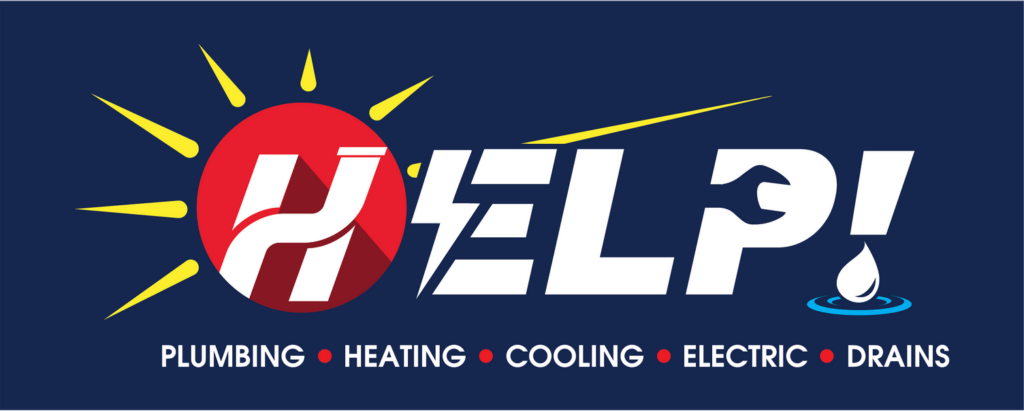A sump pump protects your home from devastating floods. When installed in your basement or crawl space, a sump pump automatically kicks on and removes excess water before it can damage your home. These pumps are very dependable, but regular maintenance and occasional repairs are still needed.
Continue reading to learn about the different kinds of sump pumps and some preemptive steps to keep them running properly. If you have any questions, HELP Plumbing, Heating, Cooling and Electric is here for all of your sump pump maintenance, repair, and replacement needs.
3 Reasons to Install a Sump Pump
Avoid Flood Damage
During heavy storms, water can enter a basement and cause a lot of damage. An effective sump pump can remove water before it can rise high enough to cause water damage.
Protect Your Home from Mildew & Mold
Any amount of water entering your basement or crawlspace means an increase in humidity, which creates a breeding ground for mold and mildew. These growths are both unpleasant to see and smell, and they can cause or contribute to health issues, including skin irritation and itchy eyes. A sump pump will help keep your humidity levels under control.
Protect Your Belongings
A sump pump protects your art, furniture, and precious possessions from flood damage and the ravages of moisture.
If you experience excess water in your basement due to heavy rainfall or a high water table, you will need to find a way to remove it before it causes building damage, high humidity, or the development of mold or mildew. Speak with a professional plumber about installing a sump pump, which will safely and automatically remove the water accumulation and put it into your home’s wastewater system.
How a Sump Pump Works
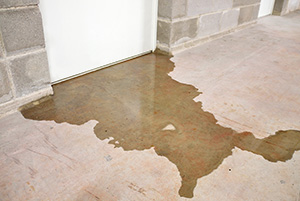
A sump is basically a hole in the ground. This hole is dug up in the lowest part of the basement. When water reaches a certain level in the sump, the pump automatically switches the pump on to send the excess water away (usually to a nearby storm drain). Then, it automatically switches off when all the water is gone.
Sump pumps are a cheaper alternative to expensive foundation repairs, especially if you only experience flooding during severe storms. And they may be the only practical solution if water is rising up from below the surface due to a rising water table.
Selecting the Right Sump Pump for Your Home
There are many different sump pumps to choose from, but most run on electricity. The two most common types of sump pumps are pedestal and submersible.
A pedestal sump pump, sometimes known as an upright sump pump, has its motor sitting above the sump and therefore out of the way of any water. The motor of a submersible sump pump, on the other hand, sits inside the sump, and is designed to be submerged in water.
Both types of sump pump accomplish the same job, but they each have their pros and cons. For instance, pedestal sump pumps are cheaper and easier to maintain, but they are also larger and more noticeable. The type that will best serve your home is something your installation technician will help you determine. Both work well, but they have different maintenance requirements and power needs.
How to Keep Your Sump Pump in Optimal Condition
A sump pump is a smart, but significant, investment for your home. In order to keep it running properly, it’s important to keep an eye on things, such as clogs, strange sounds, and bad smells.
Hire the Right Sump Pump Installer
 The first day of your sump pump’s life is its most important. If the initial installation isn’t performed properly by trained and licensed technicians, then everything might have to be redone.
The first day of your sump pump’s life is its most important. If the initial installation isn’t performed properly by trained and licensed technicians, then everything might have to be redone.
Sump pump installation requires the skills of an electrician, plumber, and carpenter. Our team of expert technicians will install your sump pump so you can relax knowing that water is being kept out of your basement.
Contact an experienced plumbing contractor who will help you select the right type of pump and the correct size for your home, and then install it so it hooks up to the appropriate power supply and effectively drains water away from the home.
In addition to the sump pump, you will also need a discharge line, which can be buried underground to avoid the eyesore and tripping hazard.
DIY Sump Pump Maintenance
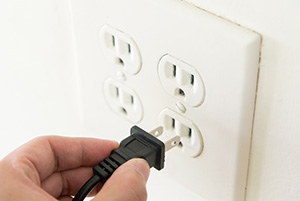 After your sump pump has been installed by a licensed, trained and insured professional, there are some steps you can follow as a homeowner to help keep you sump pump running smoothly for years to come.
After your sump pump has been installed by a licensed, trained and insured professional, there are some steps you can follow as a homeowner to help keep you sump pump running smoothly for years to come.
A little sump pump maintenance can mean the difference between a wet and dry basement. It’s best to have a partner help you with regular sump pump maintenance.
Every 3 months, or before a heavy storm, test your sump pump with these DIY maintenance tips:
- Unplug the sump pump.
- Remove the lid to the sump and take a look inside. Use a gloved hand to remove any pieces of debris inside the sump, especially near the inlet screen.
- Plug the sump pump back in.
- Locate the outdoor discharge line and have your partner stand by it. The discharge should be far away from the home and pointed downhill, away from the foundation. If you cannot locate your discharge line opening, contact the company who installed the sump pump.
- Inspect and clear the area around your discharge line. If the opening is clogged with leaves and other debris, it can prevent water from exiting the line and lead to sump pump damage and a flooded basement.
 While one person is waiting near the discharge line, the other person should pour about 5 gallons of water into the sump basin. This should trigger the float switch and the pump should turn on.
While one person is waiting near the discharge line, the other person should pour about 5 gallons of water into the sump basin. This should trigger the float switch and the pump should turn on.- If the water is discharged properly, the person outside should be able to see the water exit the drainpipe. Make sure the water is being directed away from the home, ideally to a nearby storm drain.
When the sump pump is running, it should only take about 10-20 seconds to empty completely. If it takes minutes or more to empty, it’s taking too long. Contact a professional technician to take a look.
Also, pay attention to any strange sounds, such as grinding and crunching. This can indicate a blockage or mechanical issue. If your sump pump isn’t working for any reason, contact a professional to perform any necessary maintenance or repairs.
Check Valve
The sump pump has to push the water up vertically before the pipe turns at a 90-degree angle and heads outdoors where gravity takes over. In order to prevent gravity from returning the water in this vertical section of pipe when the sump pump turns off, a check valve should be installed. The check valve basically lets water go up, but stops it from coming back down and turning the sump pump back on.
The vertical section of pipe above the check valve is usually full of water. Therefore, it it’s really cold out, the water in this part of the pipe might freeze, especially if it’s in a cold part of the basement.
Watch for Frozen Discharge Lines
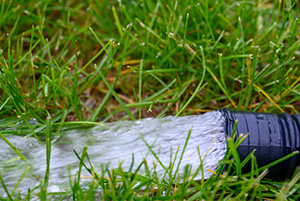 Pay attention to frozen discharge lines in the cold, winter months. If the discharge line is frozen or clogged, it can take a long time for water to exit the system. If the line is completely frozen, water can back up and lead to basement flooding.
Pay attention to frozen discharge lines in the cold, winter months. If the discharge line is frozen or clogged, it can take a long time for water to exit the system. If the line is completely frozen, water can back up and lead to basement flooding.
First, check the vertical line of pipe that goes into your sump. Try using a hair dryer to warm up the elbow where the pipe makes a 90-degree turn. Use the hair dryer on its highest setting for a couple of minutes. If this doesn’t solve your problem, put on some warm clothes and head outside.
If the discharge pipe has been properly installed, the line should be sloped downhill to help prevent potential freezes. Make sure there is not snow or ice blocking the discharge line.
Ask your contractor about check valves and IceGuard® systems to prevent flooding from frozen or clogged discharge lines. The IceGuard® system provides water with an escape route if the line is frozen or clogged.
Why You Should Have a Battery Backup
Your sump pump is plugged into your electrical system. So, if there is a power outage, your sump pump won’t work unless it is connected to a battery backup. Since power outages are often accompanied by heavy rains, it’s important to make sure your sump pump can function during power outages.
If you don’t have a battery backup, even the best sump pump in the world is going to be useless if a storm knocks the power out. Ask your contractor about installing a sump pump battery backup system.
Annual Professional Plumbing Maintenance
In addition to DIY sump pump maintenance every 3 months, we highly recommend scheduling annual plumbing maintenance for your entire plumbing system. If you have a sump pump, ask the company doing the plumbing inspection if they will also perform sump pump maintenance.
Regardless of if you have a sump pump, it’s important to have a licensed and trained plumber inspect your plumbing system once a year.
Why Choose HELP Plumbing, Heating, Cooling, and Electric?
Our dedicated plumbing team knows sump pumps in and out. Our technicians are trust-certified, receiving over 200 hours of specialty training every year, and they will treat your home with the utmost care and respect – always leaving it cleaner than they found it! They will arrive on time and can be easily identified with proper name badges, vehicles, and professional uniforms.
HELP Plumbing, Heating, Cooling and Electric is an A+ rated, BBB accredited business serving the Greater Cincinnati and Northern Kentucky area since 1927.
Need HELP™? Schedule service today!

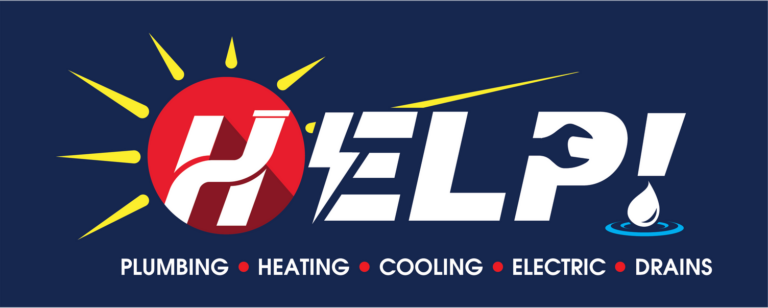
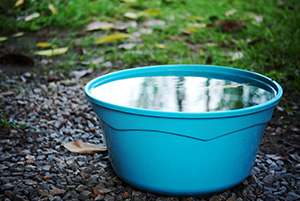 While one person is waiting near the discharge line, the other person should pour about 5 gallons of water into the sump basin. This should trigger the float switch and the pump should turn on.
While one person is waiting near the discharge line, the other person should pour about 5 gallons of water into the sump basin. This should trigger the float switch and the pump should turn on.